An employee pulse survey is the ideal tool for getting real-time feedback from your workforce. Here’s how and why they are ultra-important.

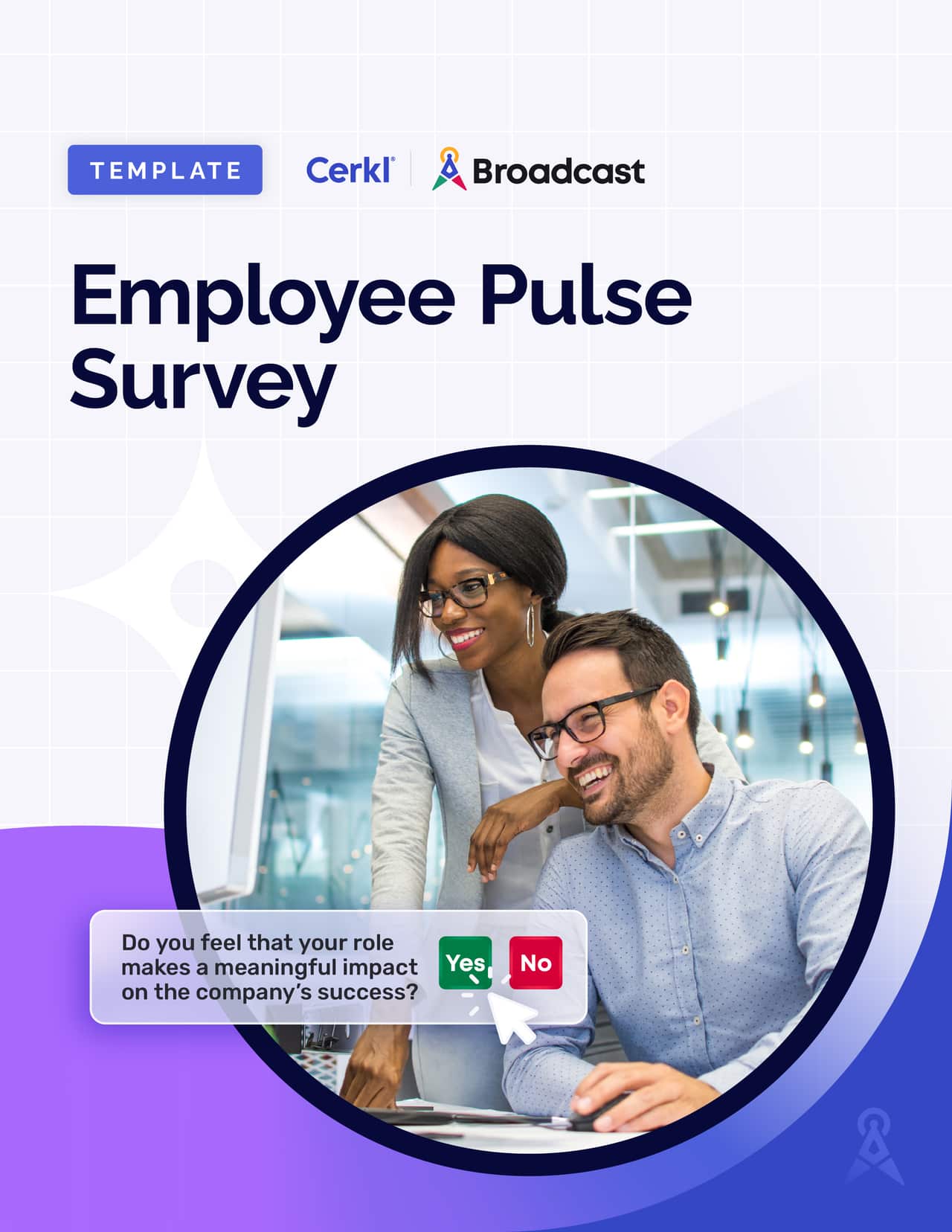
Start building a more engaged and informed workforce today. Download your free Employee Pulse Survey Template now!
Access NowIn today's fast-paced business landscape, a company's greatest asset is its workforce. But keeping them engaged, motivated, and satisfied can be a constant challenge. Traditional annual engagement surveys, while well-intentioned, can feel like a relic of the past, missing the nuances of employee sentiment shifts throughout the year. Employee pulse surveys are potentially a game-changing tool that provides real-time feedback, enabling organizations to stay attuned to the pulse of their people and respond promptly to concerns.
While employee pulse surveys appear to have gained in popularity, they continue to lag behind traditional engagement surveys in terms of adoption. According to Gallagher’s Employee Communications Report, based on their State of the Sector 2024/25 report, while 75% of organizations use engagement surveys, only 48% utilize pulse surveys.
The report states that the most divided area of channel satisfaction is the ability to perform a pulse listening activity. Survey results show that 24% are satisfied, 39% dissatisfied, and 27% neither satisfied nor dissatisfied. However, encouragingly, of the 48% of communicators who utilize pulse surveys as a listening channel, 60% said this channel was valuable in providing usable feedback to enable decisions.
It’s interesting to compare the perceived value of engagement surveys in general vs more specific pulse surveys. While the Gallagher survey didn’t compare the effectiveness of pulse surveys to engagement surveys, 75% of communicators stated they used engagement surveys, and 69% have found them to be of value, which is 9% more than those committed to pulse surveys.
Ultimately, it is vital that the benefits of real-time feedback and sentiment analysis aren’t overlooked. Thoughtfully designed, pulse surveys can uncover subtle shifts in employee sentiment, enabling timely, data-informed decisions. For organizations willing to invest, they offer a path to more responsive communication and a culture of continuous improvement.
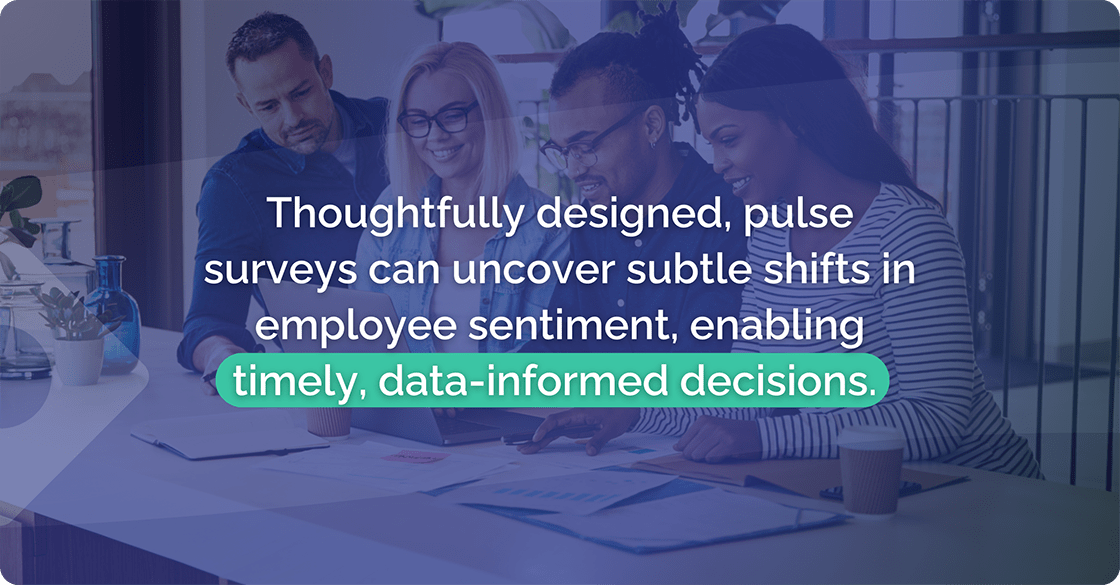
An employee pulse survey is a short questionnaire that is designed to quickly and regularly gauge the opinions, attitudes, and sentiments of employees within an organization. A primary purpose of an employee pulse survey is to provide a snapshot of the current state of employee engagement, satisfaction, and well-being, as well as identify areas for improvement.
Unlike lengthy annual surveys that are often conducted annually or biannually, an employee pulse survey is:
Typically, an employee pulse survey includes a mix of questions that assess:
Employee pulse survey answers empower organizations to:
Overall, employee pulse surveys provide a powerful tool for organizations to listen to their employees, understand their needs, and make data-driven decisions to drive employee engagement, retention, and overall business success.
Quickly garner feedback to track effectiveness of employee communication

Traditional annual engagement surveys can offer valuable insights, but they usually lack the immediacy needed to capture the ever-evolving dynamics of a workplace. Because they are shorter and more frequent, pulse surveys provide a real-time snapshot of employee sentiment on specific topics. Here’s how they differ:
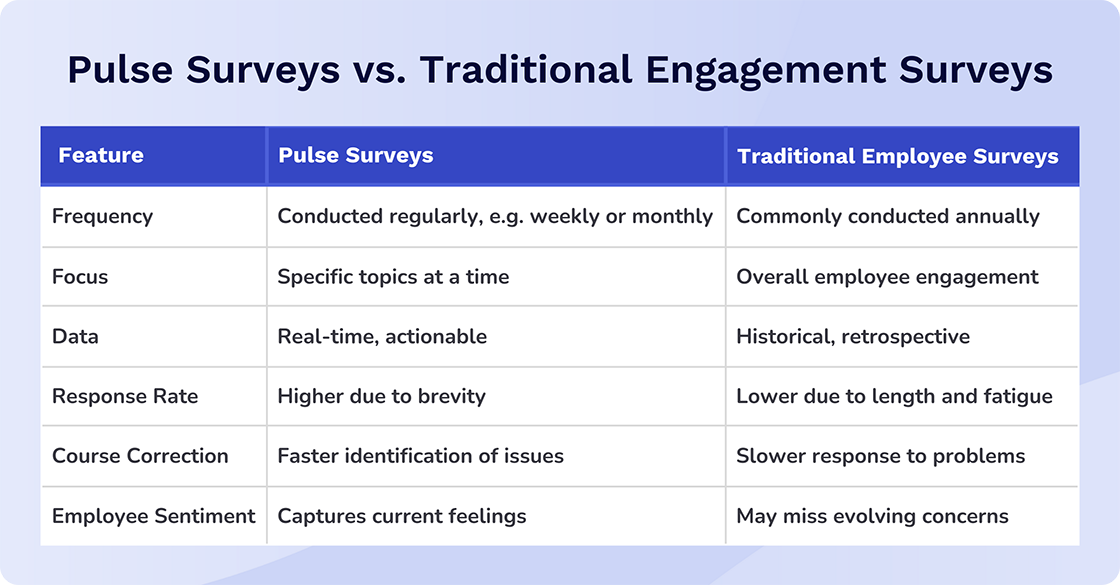
Gallagher’s 2025 Workforce Trends Report Series: Talent Benchmarks focuses on employee engagement together, with inclusion and diversity objectives. It states that the survey process and subsequent reporting should drive actionable changes rather than merely collecting data. Despite their State of the Sector 2024/25 survey finding that 75% of organizations use engagement surveys, data and insights featured in their U.S. Workplace Trends Report on talent benchmarks show that only 58% have conducted any sort of survey to measure employee engagement within the last two years. Additionally, 15% plan to conduct a survey within the next two years, and 9% conducted one more than two years ago, with 19% having no plans to conduct a survey to measure engagement.
While they don’t highlight pulse surveys, they do talk about frequency. And, of course, pulse surveys can be used to delve into elements of employee engagement.
Chris Dustin, Gallagher’s Managing Director, People and Workplace Experiences, states that employee listening — which is new in Gallagher’s State of the Sector 2024/25 survey — is essential. However, the way surveys are perceived depends on what happens after the data is collected. (That would apply to all types of surveys, including an employee pulse survey.)
“If employees notice meaningful changes and see that their feedback is being used positively, that’s way more effective than just doing monthly surveys. Surveys should act as a catalyst for change, and having a solid action plan is key to making it all work.”
Chris Dustin
Crafting an effective pulse survey requires careful planning. Here's what you need to consider:
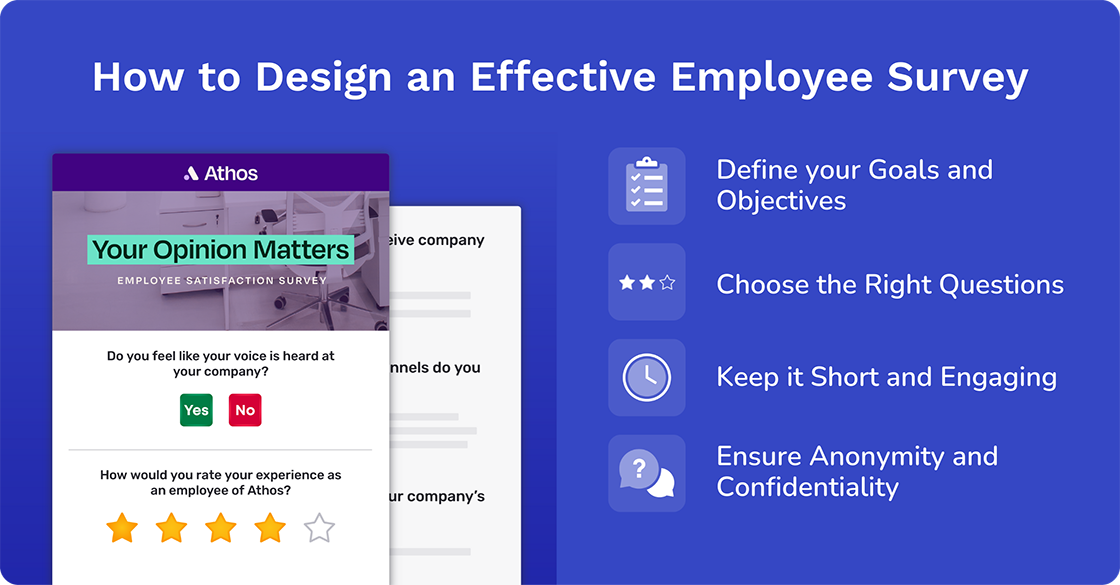
When selecting an employee pulse survey tool, consider the following essential features to ensure you're getting the most out of your surveys:
Additionally, consider the following features to further enhance your employee pulse survey tool:
Quickly garner feedback to track effectiveness of employee communication

It’s important to realize that pulse survey questions are short and used to gauge employee sentiment on specific aspects of the workplace. Typically, they consist of a small set of questions, often 5-10, that are designed to be quick and easy to answer. They may include:
Here are some sample questions you can adapt to your specific needs:
Before sending out your survey, think about these key factors:
The frequency of pulse surveys should strike a balance between staying informed and avoiding survey fatigue. While there’s no universal rule, many organizations find that sending surveys quarterly or every two months allows them to keep tabs on employee sentiment without overwhelming teams or compromising response quality.
Monthly or even weekly pulse surveys can be effective in fast-moving environments or during times of major change, such as mergers, restructures, or crisis response. However, higher frequency requires strong internal processes to quickly analyze and act on feedback. If employees don’t see visible outcomes from frequent check-ins, trust in the process may erode. At the same time, the more frequently an employee pulse survey is sent out, the shorter it should be. For instance, if you opt for a monthly survey, 10-15 questions is optimum, while a quarterly pulse survey should contain 15-20 questions.
Ultimately, the right frequency is one your organization can support with consistent follow-through. Pulse surveys should be part of an ongoing conversation, not a box-checking exercise. Whether you survey every four weeks or every quarter, the key is to communicate findings, take action, and close the loop every time.
Nevertheless, there is a caveat. According to the Qualtrics 2025 Employee Experience Trends report, employers aren’t bombarding employees with daily, weekly, or even monthly surveys. Instead, they are focusing on “passive listening” and tapping into what they call unsolicited data. Examples they cite include employees who decline meetings, answer questions on public platforms, or email customers.
“Employees don’t want to fill in surveys every day, but they also want their employers to understand and improve their experiences. This is why organizations are going beyond surveys with passive listening, making better use of the data that already exists in their work systems.”
Qualtrics
The true value of an employee pulse survey lies in taking action based on the results. Despite advances in employee listening technology, many organizations aren’t harnessing the opportunities presented by valuable employee feedback.
Qualtrics is now focusing on employee listening. Their 2025 Employee Experience Trends report examines “the state of employee listening,” finding that the percentage of employees asked for feedback more often than once a year rose from 35% in 2024 to 48% in 2025.
However, they also found that many leaders are making daily decisions that impact people without timely, relevant employee experience data.
“Leaders will struggle to build trust if they only have access to and inform their decisions based on financial and operational information. It’s experience data that helps them make smarter, better decisions that build trust, increase profitability, and enhance experiences for employees.”
Qualtrics
Whatever data and information you extract from pulse surveys, there are steps you need to take to make the best of it.
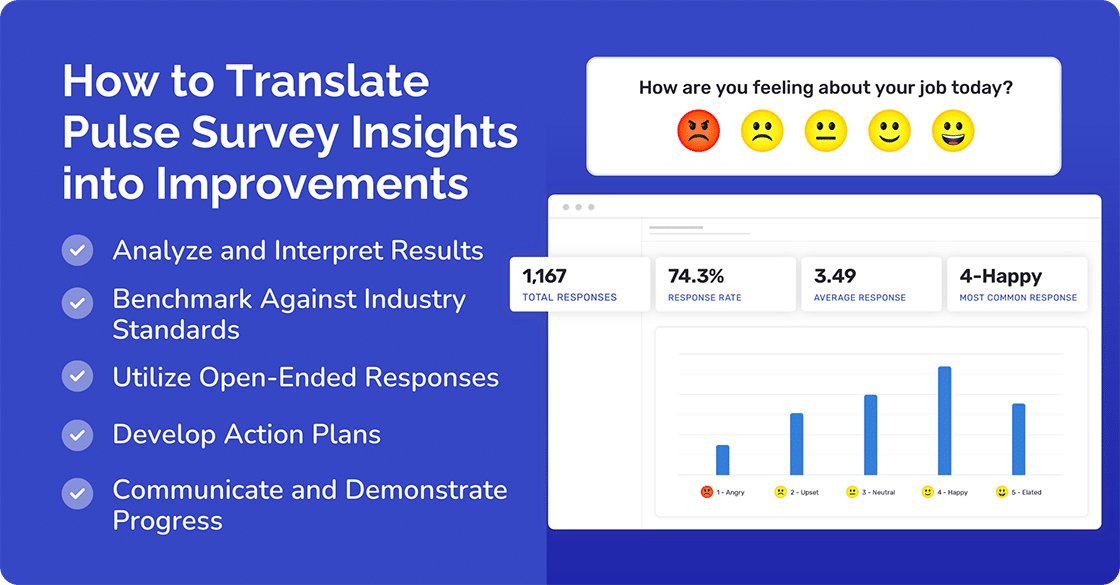
Employee pulse surveys are a powerful tool for fostering a culture of continuous improvement within your organization. By regularly gauging employee sentiment and taking action based on feedback, you can create a more engaged and productive workforce.
Cerkl Broadcast Pulse Survey solution makes it easy to design, launch, analyze, and take action on your pulse surveys. Just be aware that you have only one Pulse Survey question available for each Broadcast Email Blast you send. For this reason, instead of sending employee pulse surveys weekly or monthly, it works to continue the survey over five days to a week. The benefit is that you can improve employee engagement because the questions will be part of a single theme. Still, if you do this, it’s important to plan your questions in the same way you would for any other pulse survey.
We asked members of the Cerkl Customer Services (CS) team to provide insights into how Cerkl Broadcast clients use pulse surveys.
Typically, Cerkl clients use Broadcast Pulse Surveys at the bottom of the Email Blasts for quick feedback. They also use them to encourage ideas and employee engagement.
Questions might include:
It might even simply ask if the email Blast was helpful.

Sometimes they include an invitation for employees to add something further. For example, the Pulse Survey question might ask if they enjoyed this week’s Broadcast News Digest. This is followed by a request for more ideas to be emailed or added to a collaboration channel like Teams or Slack.
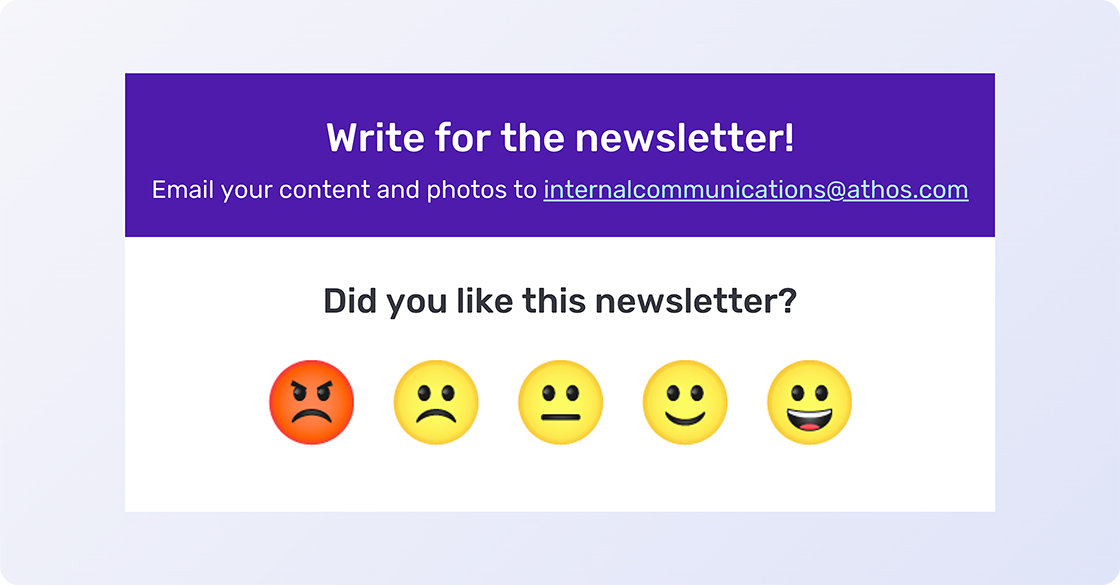
Another idea some Cerkl clients love is to use the Pulse Survey for a question of the week. They can be trivia questions about the company or feedback/questions on timely topics. Then, they’ll put the responses from the previous week in each newsletter. This is a fantastic way to increase employee engagement.
When you create Cerkl Broadcast employee pulse surveys, the questions you ask are pivotal. Our free employee pulse survey template will give you significant insight into how to create a survey. It includes sample questions for single-question pulse survey ideas as well as a five-question sample survey.
Remember that any employee pulse survey should be considerably shorter than a regular employee engagement survey. Also, it should be focused on one specific area of interest. The key is for it to be short and quick for employees to complete.

Quickly garner feedback to track effectiveness of employee communication
What is an employee pulse survey? An employee pulse survey is a short, frequent, and informal survey that measures the sentiment and opinions of employees on specific topics, providing a snapshot of their feelings and attitudes toward their work, organization, and leadership. It is typically used to gauge employee sentiment and identify trends and areas for improvement.
What are questions for a pulse survey? Questions for a pulse survey can vary depending on the organization's goals and objectives, but common examples include questions about employee satisfaction, engagement, communication, leadership, teamwork, and job satisfaction. Some examples of pulse survey questions include "How would you rate your overall job satisfaction?" or "Do you feel valued and recognized by your manager?"
What is the difference between pulse survey and employee engagement survey? The main difference between a pulse survey and an employee engagement survey is the frequency and scope of the survey. Pulse surveys are typically shorter, more frequent, and focused on specific topics or issues, while employee engagement surveys are longer, less frequent, and more comprehensive, aiming to measure overall employee engagement and satisfaction.
Why do employees do pulse surveys? Employees participate in pulse surveys because they want to be heard and have their voices amplified, allowing them to provide feedback and input on issues that matter to them. By participating in pulse surveys, employees feel more connected to their organization and more likely to feel valued and recognized, which can lead to increased job satisfaction and reduced turnover.

Quickly garner feedback to track effectiveness of employee communication